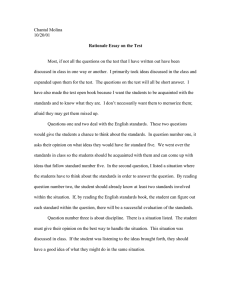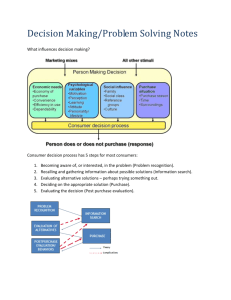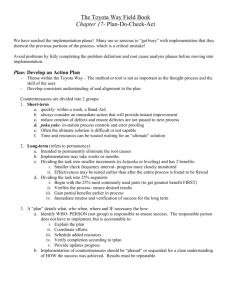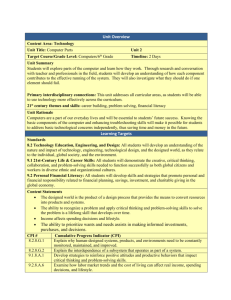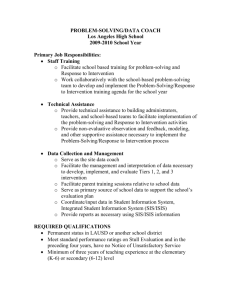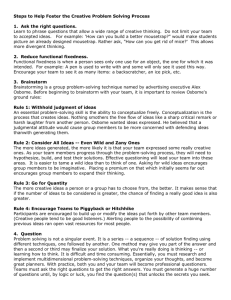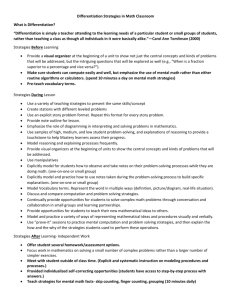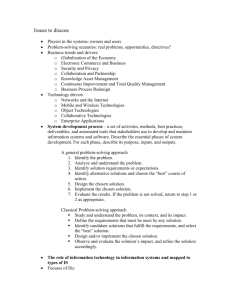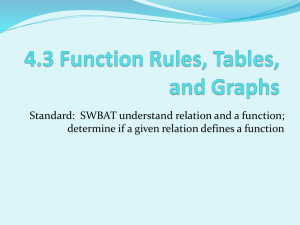Classroom Meetings Guide: Middle & High School
advertisement
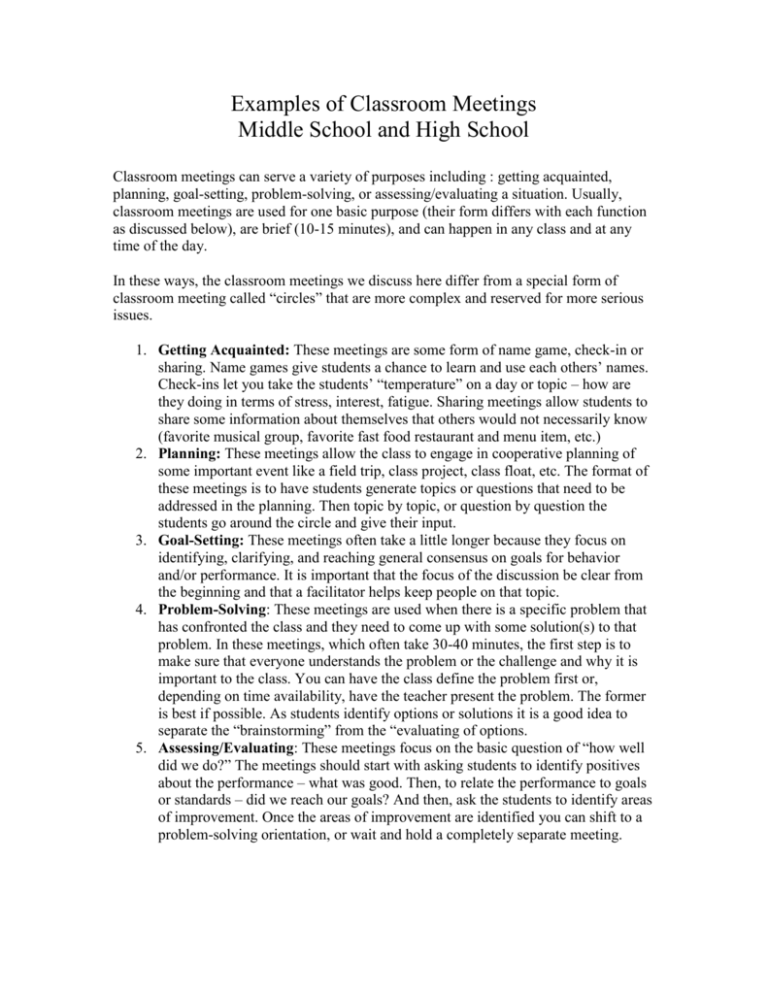
Examples of Classroom Meetings Middle School and High School Classroom meetings can serve a variety of purposes including : getting acquainted, planning, goal-setting, problem-solving, or assessing/evaluating a situation. Usually, classroom meetings are used for one basic purpose (their form differs with each function as discussed below), are brief (10-15 minutes), and can happen in any class and at any time of the day. In these ways, the classroom meetings we discuss here differ from a special form of classroom meeting called “circles” that are more complex and reserved for more serious issues. 1. Getting Acquainted: These meetings are some form of name game, check-in or sharing. Name games give students a chance to learn and use each others’ names. Check-ins let you take the students’ “temperature” on a day or topic – how are they doing in terms of stress, interest, fatigue. Sharing meetings allow students to share some information about themselves that others would not necessarily know (favorite musical group, favorite fast food restaurant and menu item, etc.) 2. Planning: These meetings allow the class to engage in cooperative planning of some important event like a field trip, class project, class float, etc. The format of these meetings is to have students generate topics or questions that need to be addressed in the planning. Then topic by topic, or question by question the students go around the circle and give their input. 3. Goal-Setting: These meetings often take a little longer because they focus on identifying, clarifying, and reaching general consensus on goals for behavior and/or performance. It is important that the focus of the discussion be clear from the beginning and that a facilitator helps keep people on that topic. 4. Problem-Solving: These meetings are used when there is a specific problem that has confronted the class and they need to come up with some solution(s) to that problem. In these meetings, which often take 30-40 minutes, the first step is to make sure that everyone understands the problem or the challenge and why it is important to the class. You can have the class define the problem first or, depending on time availability, have the teacher present the problem. The former is best if possible. As students identify options or solutions it is a good idea to separate the “brainstorming” from the “evaluating of options. 5. Assessing/Evaluating: These meetings focus on the basic question of “how well did we do?” The meetings should start with asking students to identify positives about the performance – what was good. Then, to relate the performance to goals or standards – did we reach our goals? And then, ask the students to identify areas of improvement. Once the areas of improvement are identified you can shift to a problem-solving orientation, or wait and hold a completely separate meeting.

